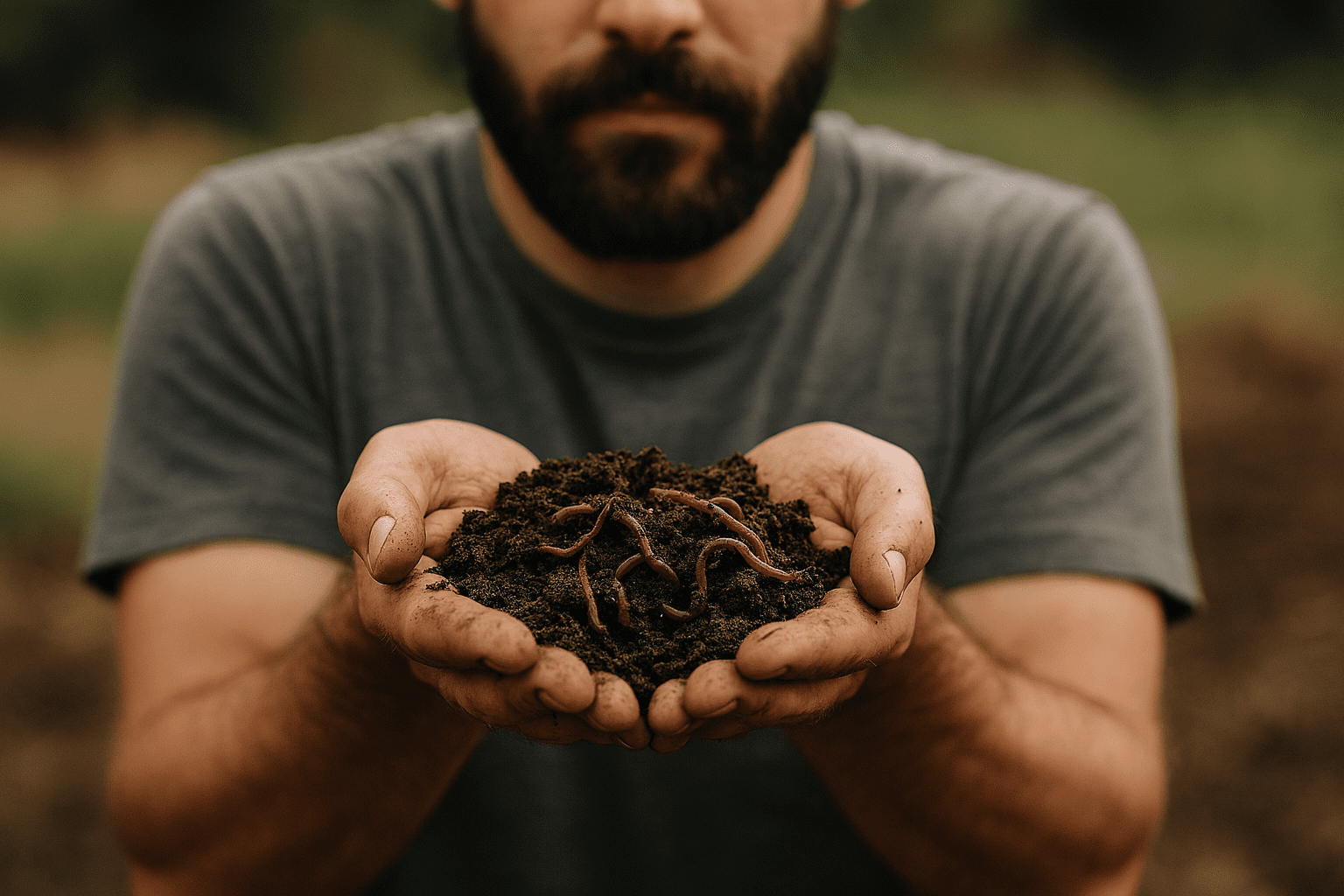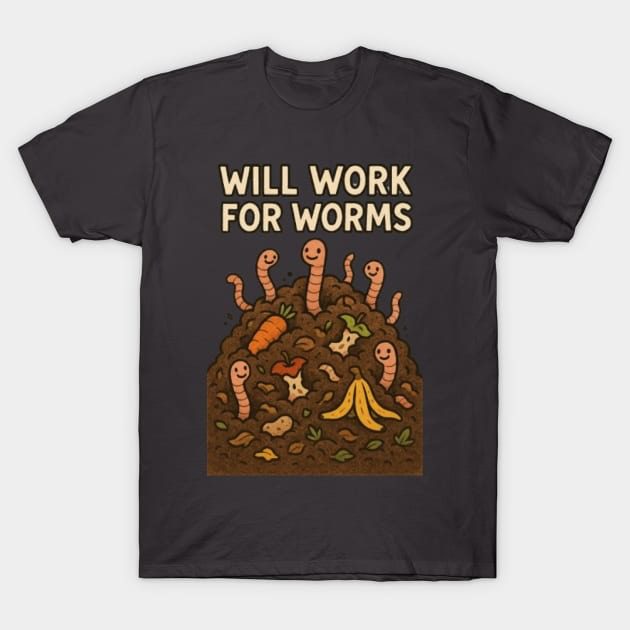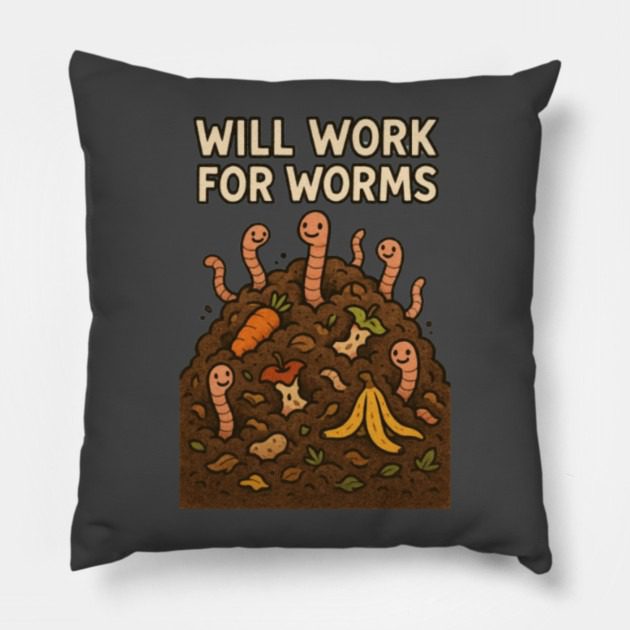Vermicomposting Made Easy
Imagine living in a small flat, or working with only a balcony or a cozy kitchen corner. City life often means limited outdoor space, but that doesn’t have to stop you from turning food scraps into nutrient-rich compost through indoor composting.
Composting is simply giving your kitchen waste a second life, transforming apple cores and coffee grounds into healthy soil instead of rubbish.
For those in apartments or homes without a garden, traditional compost bins and compost tumblers can feel too bulky.
Here’s the good news: worm composting (also known as vermicomposting) is ideal for small spaces. It’s tidy, nearly odor-free, and a worm bin easily fits under the sink or on a shelf.
With worms doing the hard work, you’ll watch your scraps reduce and convert into valuable compost to nourish houseplants or a small garden plot.
This post outlines the practical benefits of vermicomposting for small spaces, offers beginner setup tips, compares it to other composting options, and highlights key takeaways to get you started with confidence.
Key Takeaways
- Worm composting enables you to recycle food scraps, even in tiny indoor spaces.
- Vermicomposting is clean, simple, and perfect for flats and balconies.
- You can set up a compost bin with just a few materials and a handful of worms.
- Finished compost (and worm tea) enriches the health of your plants.
- Compost tumblers suit larger batches, but worm bins are ideal for everyday kitchen scraps in compact homes.
Looking for step-by-step guidance? Check out this beginner guide to worm bin setup or see tips for composting in a small backyard. For visual learners, explore this helpful worm farm composting video.
Ready to make the most of every peel and crumb? Let’s explore how worm composting can fit your life, help the planet, and keep things simple—no matter where you call home.
What is Composting and How Does Vermicomposting Work?
Composting is the natural way to transform kitchen scraps and yard trimmings into something valuable—rich, crumbly compost that supports plant growth.
Instead of sending food waste to a landfill, vermicomposting lets nature recycle it right at home.
When you live in a flat or have limited outdoor space, traditional composting can feel challenging. That’s where worm composting truly shines.
Worms do most of the work, breaking down food scraps into a powerful natural fertilizer that fits neatly under your sink or in a cupboard, making it perfect for small spaces.
The Role of Worms in Composting
 Photo by Sippakorn Yamkasikorn
Photo by Sippakorn Yamkasikorn
Think of composting worms as nature’s tiny chefs—always busy in your composting bin “cooking” up rich soil from organic matter you might usually discard.
Red wigglers (Eisenia fetida) are the favorite worms for vermicomposting. They thrive on eating fruit peels, vegetable bits, coffee grounds, and even shredded newspaper.
Here’s how the composting process works:
- Worms munch on your food scraps, breaking them into smaller pieces.
- Inside their bodies, natural bacteria complete the breakdown.
- As worms move and burrow, they aerate and mix the pile, preventing unpleasant odors.
- The result is worm castings—a nutrient-rich compost that’s likely the best plant food you’ll ever use.
Worm castings may look like ordinary soil, but they are packed with essential plant nutrients, beneficial microbes, and a light structure that retains moisture perfectly.
Even a small bin with a few hundred worms can transform banana peels and salad leftovers into a steady supply of organic matter turned into “black gold.”
Curious about which other insects support the composting process in your bin? Discover how to attract compost-friendly insects and keep pests at bay with these vermicomposting tips for pest prevention and biodiversity.
Key takeaways about worms:
- Red wigglers are ideal for small, indoor composting bins.
- Their worm castings convert everyday scraps into nutrient-rich compost.
- Worms accelerate the composting process and minimize odors.
- They keep the composting bin airy and crumbly, helping organic matter break down quickly.
For a deeper dive into the science and setup of vermicomposting, see vermicomposting basics and advantages.
Compost Tumblers Versus Worm Bins
Many wonder, “Is a compost tumbler or worm bin better for small spaces?” Both options have unique benefits that suit different lifestyles and environments.
Compost Tumblers:
- Great for balconies, patios, or other small outdoor spots.
- Tumblers allow you to toss in food scraps and turn the barrel to mix—no worms needed.
- They handle larger batches and can include yard waste.
- Some models are promoted as the best balcony compost tumbler for apartments.
Worm Bins:
- Perfect for kitchens, cupboards, or under the sink.
- Nearly odorless, fast-acting, and accessible when outdoor space is limited.
- Depend on composting worms to break down organic matter inside a sealed bin.
Here’s a quick comparison:
If you have a balcony and prefer a hands-off outdoor option, a compact compost tumbler for apartments is an excellent choice.
For low odor, quick results, and the satisfaction of watching worms work, a worm bin is tough to beat—especially in small spaces.
For more on easy setups, this guide to simple, low-maintenance composting covers both vermicomposting and tumblers.
If you’re interested in composting in small spaces more broadly, check out this detailed guide to small space composting, which highlights the benefits of vermiculture for enriching soil health and reducing food waste.
Quick tips:
- Use a tumbler if you want outdoor composting and have yard trimmings to add.
- Choose a worm bin for daily kitchen scraps indoors—and enjoy watching worms in action.
- Both methods let you embrace worm composting benefits in small or unusual spaces.
Next, we’ll explore practical setup advice and answer common questions about adapting composting to suit every lifestyle and living arrangement.
Why Worm Composting Is Perfect for Small Spaces
Worm composting offers a practical and eco-friendly way to recycle kitchen scraps, especially ideal for those living in small spaces like apartments or flats.
If you’ve ever wondered how to compost without a garden or a large outdoor bin, this method checks all the boxes.
With just a little effort, you can turn food scraps into nutrient-rich compost, all from a cupboard or a kitchen shelf.
Let’s explore why worm composting fits so seamlessly into limited living areas, whether you’re a city resident or simply short on extra square footage.
Easy Setup and Maintenance
Starting vermicomposting is refreshingly straightforward. Crafting a DIY worm bin doesn’t call for special tools or heavy spending.
Most people use materials they have on hand or inexpensive items from local stores.
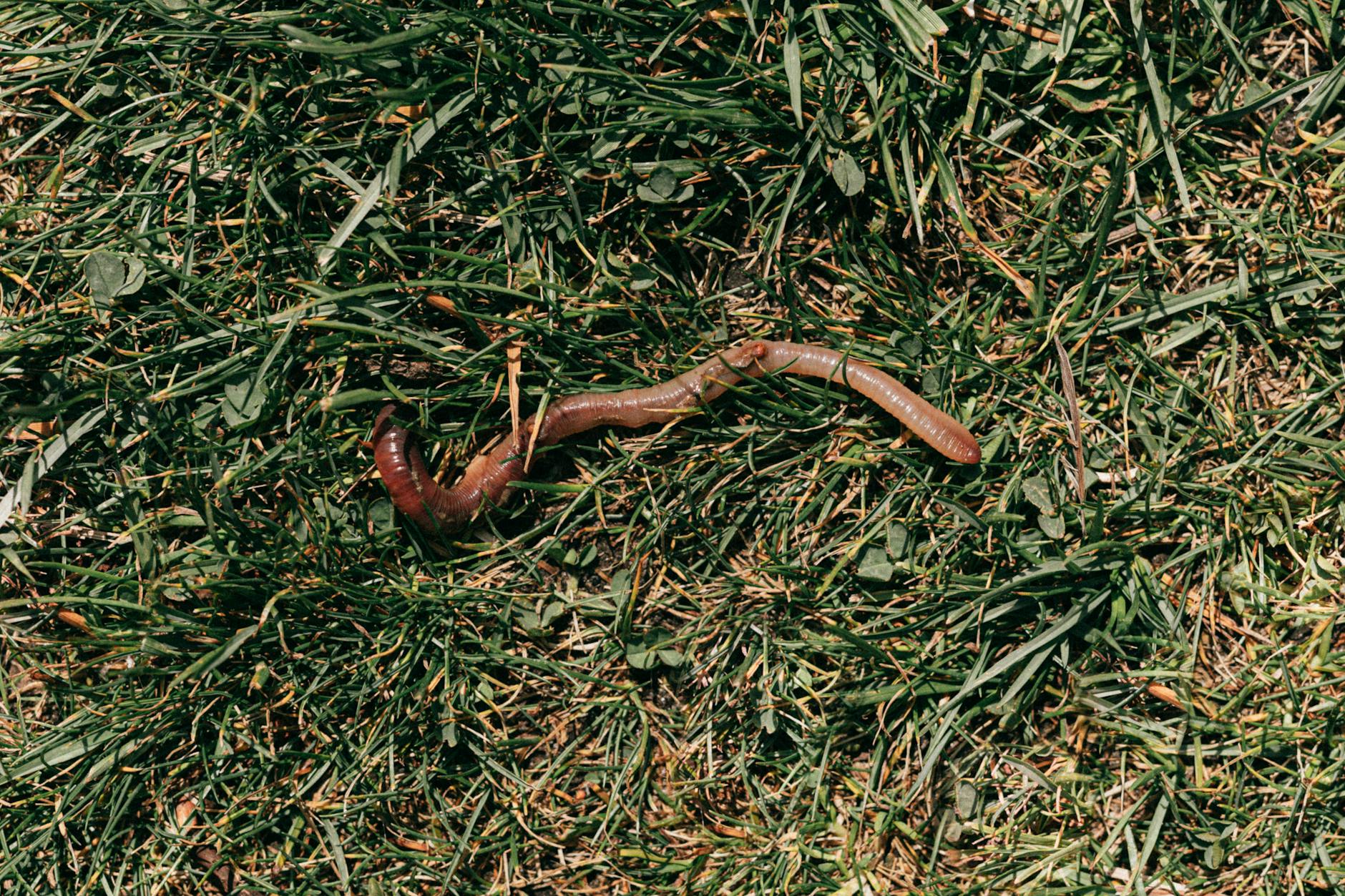
Photo by Kaboompics.com
Here’s a simple way to set up a worm bin suitable for small spaces:
- Find a plastic or wooden container with a lid—approximately the size of a large shoebox.
- Drill several small holes in the sides and bottom to ensure proper airflow and drainage.
- Add a moist bedding layer—options include shredded paper, cardboard, or coconut coir.
- Introduce a handful of red wigglers, excellent composting worms for the bin.
- Bury kitchen scraps, such as vegetable peels and coffee grounds, under the bedding.
- Place the bin in a cool, dark indoor spot, like under the sink.
No fancy gadgets are necessary to see results. A weekly check-in to add food scraps and maintain the bedding’s moist consistency is all that’s needed.
Creating a worm bin also makes a fun, educational project for families, with adults supervising children as they help feed the worms and observe the composting process up close. It’s safe, neat, and encourages sustainable habits early on. For a detailed walkthrough, check out this guide on starting a vermicompost bin at home.
Key benefits of easy setup:
- No heavy lifting or digging involved.
- Set up your DIY worm bin once and let the worms take care of the rest.
- Safe and engaging activity for children when adults are involved.
For more creative ideas to incorporate composting into tight quarters, explore these six methods for effective composting, including worm bins and other low-mess options.
Odour-Free and Pest-Free Composting
A common concern when composting indoors is whether the process will cause unpleasant odours or attract pests.
Fortunately, worm bins managed correctly eliminate these worries.
The composting worms and bedding create a balanced system that prevents smells. Odours usually only appear if the bin becomes overly wet or overloaded with food scraps beyond what the worms can process.
By following a few simple steps, your worm bin can smell as fresh as healthy soil.
Tips to keep your worm bin clean and odour-free include:
- Adding shredded paper or similar bedding to absorb excess moisture and neutralize smells.
- Always burying food scraps under the bedding to deter flies.
- Avoiding meat, dairy, and oily foods that decompose slowly and may cause rot.
- Not overfeeding—allow worms time to eat through kitchen scraps at a manageable rate.
Regular monitoring and adjusting moisture levels keeps everything running smoothly. If any odour does occur, simply mix in additional dry bedding or add a few more holes for improved ventilation.
While other composting options like tumblers and small outdoor bins can also minimize odours with occasional turning and moisture control, worm bins are especially suited for indoor spaces.
They provide compost without concerns about pests or unpleasant smells.
For more advice on how to avoid mistakes and troubleshoot, see low-effort compost systems that maintain cleanliness and ease.
Top tips for a healthy, smell-free worm bin:
- Feed little and often to prevent overpacking.
- Maintain bedding that is moist, but not soggy.
- Mix bedding and scraps evenly for balance.
- Keep food scraps covered and the lid secure.
Following these straightforward steps means your worm bin stays clean, contained, and virtually invisible — perfect for compact living.
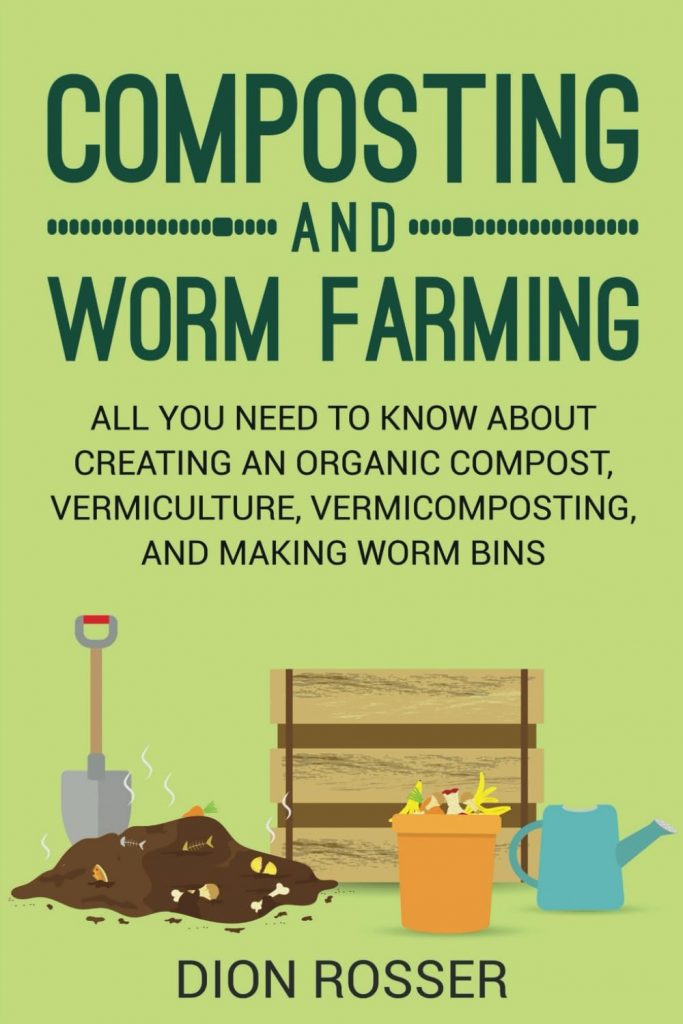
Key Takeaways:
- Worm bins are quick and easy to set up using everyday tools.
- Safe for families, including children, when adults guide the process.
- Produces nutrient-rich compost without bad smells or insect issues when properly maintained.
- Ideal for flats, small homes, and anyone eager to recycle scraps sustainably for healthier soil and gardens.
Discover even more about improving your composting setup in small spaces and how composting enhances local soils here: improving soil with composting.
Key Benefits of Worm Composting for Urban Living
Worm composting is not just an interesting experiment—it’s one of the most efficient ways to recycle organic matter right where you live, even if that’s a small apartment or a bustling city street.
Vermicomposting fits perfectly into an eco-friendly lifestyle by turning your kitchen scraps into valuable soil boosters.
If you want a sustainable habit that maximizes every bit of waste, read on. A worm bin offers impressive benefits for urban living, especially when space is limited and greener choices are a priority.
Sustainability and Environmental Impact
Vermicomposting is a powerful way to reduce waste and benefit both the environment and your local community.
By diverting food scraps from landfills, a worm bin helps decrease the release of harmful greenhouse gases like methane.
When worms convert organic matter into nutrient-rich compost, you’re essentially transforming leftovers into high-quality fertilizer that helps plants thrive.
This process does more than just cut down on trash.
The worm castings produced are a natural source of nutrients that enrich soil, making urban gardens—from simple balcony pots to rooftop beds—healthier and more robust without relying on synthetic chemicals.
- Reduce waste and methane emissions: Every bit of kitchen scraps fed to your worms is one less contribution to landfill methane production.
- Nutrient-rich compost for urban plants: The worm castings improve soil structure, retain moisture, and supply essential nutrients, supporting stronger plant growth.
- Less reliance on chemical fertilizers: The compost created by worms is completely organic, enabling you to ditch artificial fertilizers and enjoy flourishing greenery.
Many urban residents wonder if composting can truly make a difference in dense cities.
Research shows that just one well-managed worm bin can reduce household food waste by up to 30% (vermicomposting stats). Imagine the cumulative impact if every building adopted vermicomposting—cleaner air, less waste, and healthier plants everywhere.
If you want to turn everyday kitchen scraps—like potato peels—into fertile compost, this potato peel composting guide offers practical tips to get started.
Get this great shirt and more at our Composting Teepublic Shop
Accessibility for All Lifestyles
One of the best aspects of worm composting is that it’s accessible to everyone. You don’t need a backyard, expensive gear, or gardening skills.
Worm bins are adaptable—you can begin with a small setup and expand as you get comfortable, or keep it minimal with a compact bin the size of a shoebox.
Whether you live in a studio flat, juggle a hectic schedule, or have never gardened before, vermicomposting makes creating nutrient-rich compost possible in nearly any space.
- Fits any space: Worm bins are small, lightweight, and easy to move. Place one under the sink, inside a cupboard, or out on a balcony.
- No prior expertise needed: You only need to feed the worms your kitchen scraps and ensure the bin stays moist.
- Low maintenance, high benefits: Unlike traditional compost heaps or tumblers, worm bins don’t require turning or heavy lifting—worms do all the work naturally.
Vermicomposting is a budget-friendly option perfect for beginners. Kids can join in learning about natural cycles and healthy living habits as well.
For those pressed for time or uninterested in traditional gardening, worm composting quietly recycles your food waste and delivers a steady supply of organic matter that boosts your plants’ vitality.
For more detailed advice on starting vermicomposting at home using kitchen waste, explore this comprehensive guide—ideal if space, time, or experience is limited.
To understand why worm composting is especially suited to urban environments compared to traditional methods, check out this article on the benefits of vermiculture over conventional composting.
Key Takeaways:
- Worm composting enables city dwellers to reduce waste and grow healthier plants without a traditional garden.
- Accessible and convenient—it fits kitchens, cupboards, and balconies with no expertise required.
- Decreases dependence on store-bought fertilizers, saving money while enhancing soil health.
- Composting kitchen scraps with worms offers a simple, sustainable solution for urban living.
For a broader overview on getting started or choosing the right setup, explore the vermicomposting topics and guides and find the system that suits your home and lifestyle.
Summary and Key Takeaways
Worm composting delivers a big punch in a small package. For city dwellers or anyone with just a nook to spare, it transforms how you view food waste, soil health, and daily habits.
Whether you’re new to composting, curious about vermicomposting, or considering if a compost tumbler suits your patio, understanding the benefits helps you choose the best fit for your lifestyle.
Below is a quick recap highlighting what makes worm composting special, along with practical insights from the full article.
Quick Summary
Vermicomposting uses special worms to convert kitchen scraps into nutrient-rich compost. This method is neat, mostly odor-free, and ideal for flats, balconies, or compact kitchen cupboards.
Unlike larger compost bins or tumblers, a worm bin occupies minimal space and requires little effort in turning.
The finished compost, known as “worm castings,” is loaded with nutrients and beneficial microbes that boost your plants’ health indoors or outdoors.
If you need a refresher on setting up a system in small spaces, the simple steps include:
- Find a small bin and prepare a cozy home with newspaper or cardboard bedding.
- Add red wigglers (compost worms) and start feeding them everyday scraps.
- Keep the bin moist, dark, and balanced, making minor adjustments as needed.
Worm composting not only helps shrink your rubbish pile but also supports a greener home. Even the smallest flat or busiest household can participate.
If you enjoy recycling and want to make a positive impact, this method works effectively year-round.
For more tips on choosing the right location for your composting bin, including sun or shade considerations, see this guide to vermicomposting in small spaces: sun vs shade for bins.
Key Takeaways
Here’s why worm composting is perfect for compact living:
- Ideal for small spaces. A small bin about the size of a shoebox fits easily under sinks, on shelves, or beside a washing machine.
- Nearly odor-free and simple to manage. Feeding worms the right scraps and maintaining balance minimizes bad smells and keeps fruit flies or other pests at bay.
- Worms produce super-rich plant food. The castings act as premium fertilizer for seedlings, potted plants, and garden beds. Your houseplants will thrive.
- No garden or fancy gear needed. Vermicomposting is straightforward, with many worm bins created from materials you already have.
- Helps reduce waste and protect the planet. Diverting scraps from landfills means fewer greenhouse gases and a healthier garden or balcony.
- Great for families and beginners. Clear steps and fast results make this composting process accessible to everyone.
- Compost tumblers complement small-space composting. Tumblers handle outdoor waste and larger quantities, so you can pick the method that suits your needs.
For a complete how-to, explore our easy composting guide for small spaces with practical steps and helpful comparisons.
If you’re prepping your spring garden, check out tips on using Jamieson Brothers seed compost in a spring garden, including how vermicomposting enhances seedling vigor.
Worm composting makes it simple and rewarding to compost at home, no matter your available space.
For colder months, learn about winter-friendly leaf composting in vermicomposting and how to adapt your bin for winter.
If you’re unsure whether to choose a worm bin or a compost tumbler, both have advantages. Vermicomposting excels at fast breakdown and small-scale convenience, while tumblers manage larger outdoor waste loads.
You might even combine both if you become passionate about composting.
Incorporating worm composting into your daily routine reduces your carbon footprint and nurtures healthier plants—even in the tiniest kitchen.
FAQ: Worm Composting for Small Spaces
What can I compost in a worm bin?
Fruit and veggie scraps, coffee grounds, tea bags, crushed eggshells, and plain paper or cardboard are ideal. Avoid meat, dairy, oily foods, and pet waste.
How much space do I need for a worm bin?
Very little! Even a small cupboard, closet, or shelf works. Most worm bins are about the size of a large shoebox.
Will a worm bin smell?
If you balance food scraps with adequate bedding and avoid overfeeding, your bin should smell like fresh soil. Unpleasant odors usually mean it’s time to add more dry bedding or pause feeding.
Is worm composting safe for apartments and families?
Yes! When properly managed, it’s tidy, safe, and nearly invisible. Supervise young children around the bin for safety and cleanliness.
What’s the difference between a worm bin and a compost tumbler?
A worm bin is small, indoors, and relies on worms to quickly break down scraps. A compost tumbler handles larger outdoor waste piles but requires more space and mixing. Both reduce waste and produce nutrient-rich compost.
Still have questions? Try the AI-powered Composting FAQ Bot for instant advice or explore Compost Charm’s “Don’t Toss It” campaign for creative ways to save food from the bin.
Worm composting transforms even the smallest home into a recycling and growing powerhouse. Give it a try and experience the difference!
Frequently Asked Questions About Worm Composting in Small Spaces
Worm composting is full of little surprises—most of them good! If you’re curious about how to start, what to expect, or how to keep things running smoothly, you’re not alone.
Many beginners wonder about odor, pests, what can go in the composting bin, and if it will really make a difference when there’s so little room to work with.
Let’s answer these common questions so you’ll feel ready and excited to get started with vermicomposting or take your tiny compost project to the next level.
Can I Do Worm Composting in Small Spaces?
Absolutely! Worm composting works beautifully in tight spaces—even if you only have a shelf, a kitchen cupboard, or a small balcony.
The main reason it’s so effective is because worms, including popular composting worms like redworms, thrive in dark, cozy spots and don’t require a big outdoor setup.
Most indoor worm bins are about the size of a large shoebox, so if you can store a shoe box, you can definitely compost with worms using a compact composting bin.
If you want inspiration for fitting a compost bin into your apartment or pantry, check out this helpful guide to indoor composting in a small space.
You’ll see how easily a bin tucks into discrete corners without disrupting daily life.
What Should (and Shouldn’t) I Put in My Worm Bin?
Worms love to feast on kitchen scraps and fibrous materials. Some favorites for a healthy bin include:
- Fruit and vegetable peels
- Coffee grounds and tea bags
- Shredded paper, cardboard, and paper towels (plain, not coated)
- Egg shells (crushed, in moderation)
Avoid these to prevent smells and pests:
- Meat, fish, and dairy
- Oily or processed foods
- Large amounts of spicy foods and citrus
- Pet waste
Sticking to this list ensures your composting bin remains balanced and the worms stay busy.
If you’re unsure about what food scraps to add, you can always get extra advice through the Composting FAQ Bot for real-time guidance.
How Do I Keep My Worm Bin From Smelling Bad?
Bad odors usually signal there’s too much wet food or not enough bedding.
To keep your worm bin smelling fresh and earthy, like garden soil, follow these steps:
- Add dry bedding such as shredded paper or cardboard every time you feed the worms.
- Bury food scraps under the bedding layer to minimize exposure.
- Avoid overloading the bin; a handful at a time works best in a small bin.
- Ensure the bin has good airflow with ventilation holes to maintain a proper temperature range and moisture balance.
Worms perform best in a moist, well-maintained environment.
Keeping bedding balanced with food scraps helps prevent odor and keeps your redworms healthy and active.
What If I Still Get Fruit Flies or Pests?
Fruit flies are attracted to exposed food scraps, so always cover leftovers with bedding. Other tips include:
- Use a tight-fitting lid on your composting bin.
- Only feed the worms as much as they can process in a few days.
- Storing extra food scraps in the freezer until needed.
If fruit flies appear, don’t worry. Remove visible bugs, add more bedding, and bury scraps deeper. Most pest issues resolve quickly once moisture and bedding levels are correct.
For more pest-prevention tips, explore 6 Effective Composting Methods, which cover everything from worm bins to simple outdoor approaches perfect for city living.
How Long Does It Take to Get Finished Compost?
Worms get right to work turning scraps into nutrient-rich compost, or “black gold.”
In a small bin, you can expect finished compost in about three to six months, depending on the number of worms and how often you feed them.
The final product resembles fine, crumbly soil, ideal for houseplants or small garden beds.
If you want to speed up the process or harvest compost in batches, try maintaining a second bin and rotating between them.
This keeps worms happy while ensuring a steady supply of rich compost.
Do I Really Need a Compost Tumbler For Small Spaces?
Usually, no! Compost tumblers are great if you manage large amounts of yard waste, sticks, or big batches of scraps outdoors.
But for everyday kitchen composting in a flat or small patio, a worm bin is much simpler, less bulky, and perfectly sized for limited spaces.
If you’re considering a compost tumbler, weigh the pros and cons based on your space and lifestyle, as we explain in our article on compost tumblers for balconies.
Key Takeaways from Worm Composting in Small Spaces
Here’s what matters most about the benefits of worm composting for small spaces:
- You don’t need a garden or balcony—a worm bin lets you make compost in places you never thought possible.
- Finish compost in months, not years—perfect for houseplants or balcony veggies.
- Stay odor-free and pest-free by balancing bedding and food scraps.
- Save money and help the planet—reduce food waste, cut chemical use, and watch your plants thrive.
- Worm bins teach both kids and adults how easy sustainable living can be.
For hands-on troubleshooting tips and deeper insights, explore advice from indoor composting experts who share plenty of real-world hacks.
Worm composting transforms your kitchen scraps into nutrient-rich compost without taking over your space or schedule.
Give it a try and discover just how rewarding sustainable living can be—even in the smallest flat!
Ideal for the chair you have in your shed!
Conclusion
Small-space living and worm composting are a perfect match when you choose a worm bin. Even a tiny flat or a little corner of your kitchen can transform into a sustainability hub.
Worm bins make it easy to recycle food scraps with minimal mess or odour, giving you the motivation to turn waste into nutrient-rich compost that benefits your plants.
There’s no need to miss out on the advantages of compost at home simply because you live in small spaces. If a worm bin isn’t quite right, a compact compost tumbler remains an excellent alternative.
Getting started is simpler than you might imagine. Every small change, from choosing to feed the worms veggie peels to reusing worm castings in your flower pots, moves you closer to a greener lifestyle.
The benefits of worm composting for small spaces add up quickly—less waste, healthier plant growth, and the satisfaction of seeing your plants flourish.
Ready to discover what’s possible in small spaces? Share your progress, ask questions, or explore more tips on home composting advantages to keep your eco-friendly journey thriving.
Key Takeaways
- Worm bins are ideal for flats, cupboards, or under sinks.
- You can create rich, plant-boosting compost without outdoor space.
- Compost tumblers work well for larger batches or balconies.
- Worms help you reduce waste and support the environment every day.
- Every small step counts—start a worm bin or compost tumbler and watch your food scraps transform into valuable compost.
Thank you for reading and supporting greener living. What will you compost next?
If you have questions or want instant advice, try the Composting FAQ Bot and keep making small changes that make a big difference.

